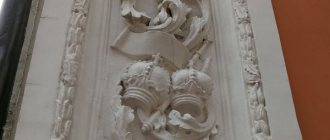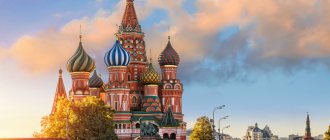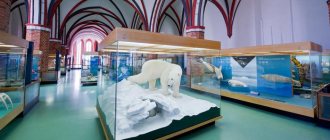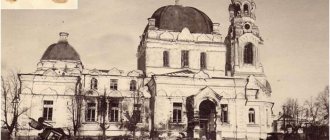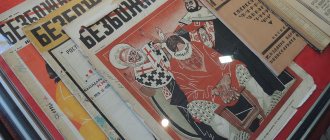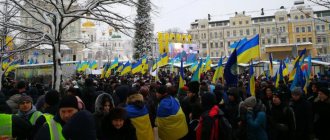The Russian Orthodox Church is governed today by the Patriarch of All Rus', under whom the Holy Synod operates - an advisory body that controls the activities of metropolitanates and clergy, and also helps the Patriarch in decision-making.
However, there was a time in the history of the Russian Orthodox Church when its life and activities were completely controlled by the created Spiritual College, also called the Holy Synod. The creation of the College was the initiative of Emperor Peter I, after the position of Patriarch was completely abolished in 1700.
The Holy Governing Synod was created by order of Peter I
This was not just a reorganization of the Church, but its complete subordination to the will of the monarch, who received the opportunity to manipulate and control the clergy. The Holy Synod existed from 1721 to 1917 and became the final event of the church reform of Peter I.
Legal status
After the death of Adrian in 1700, Emperor Peter I decided to complete the church reform by creating a state body. In 1701, the emperor abolished the position of Patriarch and created the Holy Governing Synod.
According to its legal status, the Synod is the main state body of church and administrative power in the Russian Empire. The created Spiritual College completely replaced the Patriarch, performing his functions both within the Church and in all international relations.
In addition, the Council replaced the councils of local bishops, completely controlling all the activities of the Church. With the help of the created body, the government of the Empire could control the internal and external relations of the Russian Orthodox Church, managing it at its own discretion.
Important! This status was recognized not only by the clergy of the Russian Orthodox Church within the Russian Empire, but also confirmed and accepted by the Eastern patriarchs and autocephalous churches.
All members of the Collegium were appointed to positions by the autocratic government in the person of the Emperor, who in addition had an official representative in the Collegium - the Chief Prosecutor. The orders of the autocrat for the created body were not subject to discussion and were mandatory.
Reasons and purposes of creation
The main goal of Peter I, in addition to completely reforming the state foundations of the Russian Empire, was to concentrate all power in the hands of the emperor. It was for this purpose that he carried out a number of government reforms, and in 1700 he took up the work of the Church.
Since until this time the activities of the Russian Orthodox Church were completely subordinate to one person, the emperor and other state authorities had no control over it, so the goal of Peter I was the complete subordination of the Russian Orthodox Church. He wanted not just to rule, but to imprison her in the state administration apparatus and monopolize power.
In 1721, the Spiritual College was organized, which was called the Holy Governing Synod
The Spiritual College was formed to govern the Russian Orthodox Church and enable the emperor to make decisions on all internal and external issues. The formation and creation of the body took place according to the general rules of reform of executive institutions of the period 1717-1722, when collegiums were created instead of orders.
Functions
Since the Governing Synod was created instead of the position of the Patriarch, it concentrated its 2 main functions:
- Administrative - The Collegium dealt with issues of internal reorganization of the Church, spiritual enlightenment and regulation of rituals.
- Judicial - resolved controversial issues regarding the activities of clergy, church heresies and was the authority that defrocked and anathematized.
The Emperor gave the body the right to resolve all internal and external conflicts and issues, while directly controlling these processes. The Government Council performed the following work:
- election of bishops;
- establishment of new departments;
- appointment of bishops;
- regulating rituals and setting dates for holidays;
- implementation of censorship of all theological works;
- regulation of marriage;
- spiritual education of parishioners;
- canonization of saints.
The body dealt with all issues that were previously under the jurisdiction of the Patriarch (spiritual, government, monastic and palace orders).
Powers of the Synod
The Synod had the powers necessary to censor theological books, church history and canonical works. This body carried out legal proceedings in the first instance regarding the cases of bishops who were accused of committing anti-canonical acts. The Synod made final decisions on matters of divorce, as well as defrocking the clergy. He anathematized the laity, while simultaneously carrying out the spiritual enlightenment of the masses.
The composition of the Synod was appointed by imperial decree. The representative of the Russian monarch in this body was the Chief Prosecutor.
Choose an answer
History of creation
In the fall of 1700, priest Adrian dies and Emperor Peter I, trying to avoid the election of a new leader of the Russian Orthodox Church, appoints Metropolitan Stefan Yavorsky as guardian of the throne - he was in charge of the St. Petersburg diocese, but did not have the right to fulfill his other duties.
Temporarily, all personnel and administrative functions of the Patriarch were placed under the leadership of the Monastic Order (it was restored in the winter of 1701). The Russian Orthodox Church remained in this state until 1718.
All members of the Synod were appointed by the emperor and swore allegiance to him
Peter I began an active transformation of government bodies in 1717, and a year later proposed the creation of a Spiritual College to manage the administrative and judicial affairs of the Church. To create a Charter according to which the body would work, Bishop Feofan Prokopovich from Pskov was called, who created the regulations for the activities of the future state-church body.
He justified his actions by the desire to protect the people from the creation of some kind of idol in the person of the Patriarch. According to the theologian, a powerful figure at the head of the Church is more likely to harm the spiritual state of the people. In the future, the Manifesto was signed by all the current bishops and archimandrites of the Empire, while almost everyone was under pressure from the secular authorities.
Important! In 1721 (January 25), the emperor issued a manifesto that justified the establishment of the Theological College and officially endowed it with Patriarchal functions. He also took care of the worldwide acceptance of the body he created, for which he sent an appeal to Constantinople to the current Patriarch Jeremiah III.
The president of the new body was Stefan Jaworski, who generally did not approve of the actions of the autocrat, but did not enter into open confrontation with him. In 1723, this form of power was approved and accepted by the patriarchs of Constantinople and Antioch, who recognized the patriarchal rights of the Council.
The Theological College began its activities in February 1721, even before the recognition of the world patriarchs, and continued until 1918, when the autocracy fell in Russia. For control, the position of chief prosecutor was created, who was appointed directly by the emperor.
Activities of the College in the 18th-19th centuries.
Throughout the existence of the Government Synod (under Catherine I it began to be briefly called “Spiritual”) its members had to publicly take an oath, which included words about complete submission to the power of the monarch of the Russian Empire. In addition to its main administrative and judicial activities, the College, until 1742, also carried out the work of a bishop in the region that had previously been governed by the Patriarch.
Spiritual Regulations of 1721 - Charter of the Holy Synod
In the first years of its existence, a Tiun office, a spiritual dicastery, an office and an order for inquisitorial affairs were opened, but they were all closed in the next 20 years. Also throughout the 18th and 19th centuries. The composition also changed: initially it included 12 people, but later their number changed from 10 to 15 people.
In 1888, its own official printed publication appeared - the Church Gazette magazine, which covered all the news of the Russian Orthodox Church and important events in its life.
Last years (1912-1918)
In 1912, the situation around the Council worsened, as interference in its affairs not only by the monarch, but also by the Empress’s confidant, Grigory Rasputin, increased. Metropolitan Vladimir (Bogoyavlensky), who held the position of chairman, was transferred to Kyiv for disagreement with Rasputin, and the atmosphere in the Council became tense.
The fact is that some members were directly subordinate to Rasputin and reported everything that happened and was said at the meetings in Tsarskoe Selo. Even chief prosecutors were appointed by Rasputin’s decision, which openly outraged all members of the Church. That is why the situation inside the Council became tense and many openly became opposition to the throne.
The Holy Council received the revolutionaries even before the abdication of Nicholas II, since on the afternoon of March 2 it decided to enter into contact with the Executive Committee. Already on March 6, a decree was issued praying not for the autocrat, but for the new Provisional Government.
Participants of the Extraordinary Meeting of the Holy Synod, July 26, 1911
In the summer of 1917, the post of chief prosecutor was abolished, and on January 31, 1918, by a resolution of the All-Russian Council, the powers of the Theological College were transferred to the Patriarch and the collegial bodies under him. As a state structure, it was liquidated by a corresponding decree of the Council of Commissioners in the same year.
First members[ | ]
- Stefan (Yavorsky), President of the Synod (February 14, 1721 - November 27, 1722), Metropolitan of Ryazan Theodosius (Yanovsky)
, first vice-president of the Synod (November 27, 1722 - April 27, 1725), Archbishop of Novgorod - Feofan (Prokopovich)
, first vice-president of the Synod (1725 - July 15, 1726), Archbishop of Novgorod
- By 1738, only one bishop sat in the Synod, besides him there were archimandrites and archpriests
Compound
The composition and structure of the Synod were prescribed in the Spiritual Regulations. According to the document, the Council consisted of only 12 members:
- the president;
- two vice presidents;
- five assessors;
- four advisors.
In addition to the main composition, the Council included several bishops, representatives of the highest clergy and abbots of monasteries. According to the regulations, at least 3 members of the Council had to bear the rank of bishop. At the same time, the president had an equal vote with the other members.
Chief Prosecutor
In terms of the structure of its work, the Council did not differ from the Senate or the Collegium, and the Chief Prosecutor was appointed as the direct imperial representative. In 1722, he became Colonel Ivan Boltin, whose duties included not only reporting all actions to Peter I, but also monitoring the relationship of the Synod with the civil authorities, as well as the opportunity to vote against decisions made if they did not correspond to the will of the emperor.
As a result of the reform of Peter I, the Church completely lost its independence from secular power
The Chief Prosecutor was appointed and reported directly to the emperor, and over time this position ceased to be an observation one, but became a leadership one. The prosecutor controlled not only the work and decisions made by the Synod, but also all its connections with government agencies and secular authorities. Over time, the powers of the prosecutor became identical to those of the minister, and the official himself sat on the Committee of Ministers.
Senior members
Over time, the secular titles of the positions of Council members were replaced by more ecclesiastical ones, and the positions of “president” and “vice-president” began to be called “principal members”. The first leading members in the history of the Synod were:
- Stefan Jaworski;
- Feofan Prokopovich;
- Ambrose Yushkevich.
The leading member of the Synod was most often the Metropolitan of St. Petersburg.
Notes[ | ]
- ↑ 1 2 3 4 5 Tsypin V.A.
Church law. — Ed. 2nd. - M.: MIPT Publishing House, 1996. - 442 p. — ISBN 5-89155-005-9. - St. Zak. Main T. 1. Part 1. Art. 43.
- Decree of Emperor Peter I On the establishment of the Monastic Order ... (unspecified)
January 24 (February 4), 1701 - Decree of the Tsar and Grand Duke Fyodor Alekseevich “On the destruction of the Monastic Order” (unspecified)
. December 19 (29), 1677 - Decree No. 3718 // Complete collection of laws of the Russian Empire, since 1649. First meeting. - St. Petersburg, 1830. - Volume 6. - P. 314-346
- Published in the fall of 1721 under the title Regulations or Charter of the Spiritual Collegium, according to which it knows the duties of its own and all clergy, as well as lay persons, since they are subject to spiritual management, and, moreover, has to act in the administration of its affairs
: Decree No. 3718 // Complete Collection laws of the Russian Empire, since 1649. First meeting. - St. Petersburg, 1830. - Volume 6. - P. 314-346 - Decree of Emperor Peter I “On naming the Monastic Order of the Synodal Government as the Chamber-Office” (unspecified).
January 14 (25), 1725 - Memoirs of the comrade chief prosecutor of the Holy Synod, Prince N. D. Zhevakhov. T. 2. Ch. 51. The attitude of the Russian tsars to the church (undefined)
. Access date: January 30, 2014. - Shavelsky G.I.
Russian Church before the Revolution. - M.: Artos-Media, 2005. - P. 78, 87. - ISBN 5-98574-011-0 - Shavelsky G.I.
Memoirs of the last protopresbyter of the Russian army and navy.
Ch. XIX. Church affairs. Tobolsk scandal. (undefined)
. Access date: January 30, 2014. - Shavelsky G.I.
Russian Church before the Revolution. - M.: Artos-Media, 2005. - P. 486. - Quote From: "Government Bulletin". 5 () March 1916, No. 52, p. 2.
- A great act of trust. // "Moskovskaya Vedomosti". March 6 () 1916, No. 54. - P. 1.
- ↑ 1 2 Sapelkin N.
“He who sows sparingly will also reap sparingly” Archival copy dated July 1, 2016 on the Wayback Machine // Historical Truth, 01/30/2015 - The Orthodox Church and the coup d'etat. // “Church Bulletin, published by the Missionary Council at the Holy Synod.” 1917, April - May 14, No. 9-17. Stb. 181-182.
- “Church News published under the Holy Governing Synod.” April 22, 1917, No. 16-17. — P. 83.
- Gubonin M.E.
Contemporaries about Patriarch Tikhon. T. II. - M.: Orthodox St. Tikhon's Humanitarian University, 2007. - P. 220. - ISBN 978-5-7429-0303-1 - "Bulletin of the Provisional Government". 3 () May 1917, No. 46 (92). — P. 1.
- "Church News". 1918, No. 3-4 (January 31). — P. 22.
- "Moscow Church News". 1918, No. 3. - P. 1.
- Statehood of Russia. Book 4. - M.: Nauka, 2001. - P. 108. - ISBN 5-02-008746-7
- On the separation of church from state and school from church (Decree of the Council of People's Commissars) (unspecified)
. Access date: January 30, 2014. - Archived copy (unspecified)
(inaccessible link). Date accessed: July 12, 2021. Archived August 25, 2021. - Culture of the Leningrad region
Literature[ | ]
- Alekseeva S.I.
The Holy Synod in the system of higher and central state institutions of post-reform Russia, 1856-1904. - St. Petersburg: Nauka, 2003. - 276 p. - Alekseeva S.I.
The Holy Synod and the State Council in Russia (second half of the 19th century) // Pages of Russian history. Problems, events, people. Collection in honor of Boris Vasilievich Ananich. - St. Petersburg, 2003. - P. 10-16. - Alekseeva S.I.
Reform projects of the Holy Synod // Bulletin of the Orthodox St. Tikhon's University for the Humanities. Ser. II. Story. History of the Russian Orthodox Church. - 2005. - No. 1. - P. 5-23. - Alekseeva S.I.
The tradition of the “Symphony” and church-state relations in post-reform Russia // XVI Annual. Theological Conf. Orthodox St. Tikhon's Humanitarian University: materials. T. 1. - M.: PSTGU Publishing House, 2006. - P. 99-102. - Alekseeva S.I.T.I.
Filippov - official of special assignments under the Chief Prosecutor of the Holy Synod // Collections of the Presidential Library. Ser. "Electronic archive". Vol. 1. The Holy Synod in the history of Russian statehood: Sat. materials Vseros. scientific conf. with intl. participation. - St. Petersburg: Presidential Library, 2021. - pp. 115-130. - Alekseeva S.I.
Institute of the Synodal Chief Prosecutor's Office and Chief Prosecutors of the Holy Synod in 1856-1904. // Nestor. Quarterly thematic magazine history and culture of Russia and the East. Europe. Orthodox Church in Russia and the USSR. Sources, research, bibliography. - St. Petersburg; Chisinau: Nestor-Historia, 2001. - No. 1. - P. 291-310. - Babkin M.A.
The Holy Synod of the Russian Orthodox Church and the overthrow of the monarchy // Bulletin of St. Petersburg University. Story. - St. Petersburg: 2021. T. 62. Issue. 3. pp. 522-544. - Barsov T.V.
The Holy Synod in its past. - St. Petersburg, 1896. - 446 p. - Higher and central government institutions of Russia. 1801-1917. T. 1. / resp. comp. D.I. Raskin, resp. ed. N. P. Eroshkin. - St. Petersburg: Nauka, 1998. - pp. 134-147. - ISBN 5-02-028394-0; 5-02-028386-X
- Prot.
A. M. Ivantsov-Platonov. About Russian church administration. - St. Petersburg, 1898. - Kedrov N.I.
Spiritual regulations in connection with the transformative activities of Peter the Great. - M., 1886. - About the salary of members of the Holy Synod. Materials. / Message G. V. Esipov // Russian Archive. - 1870. - Stlb. 1953-1959.
- Prot.
V. G. Pevtsov. Lectures on church law. - St. Petersburg, 1914. - The Holy Synod in the history of Russian statehood: collection. materials Vseros. scientific conf. with intl. participation / scientific ed. S. L. Firsov, P. V. Fedorov. - 2021. - 738, [1] p.
- Smolich I.K.
Ch. II. Church and State // History of the Russian Church. 1700—1917 In 8 books. = Geschichte der Russische Kirche. - Leiden, 1964. - Tikhomirov L. A.
Monarchical statehood. — Part III. Ch. 35. Bureaucracy in the Church. - Tikhomirov P.V.
The canonical dignity of Peter the Great’s reforms on church governance. // Theological Bulletin, published by Imp. Moscow theological academy. - 1904. - No. 1 and 2. - Prot.
Georgy Florovsky. Paths of Russian theology. - Paris, 1937. - Shavelsky G.I.
Russian Church before the Revolution. - M.: Artos-Media, 2005. - P. 56-147. — ISBN 5-98574-011-0
Synodal institutions.
In 1839, headed by the synodal chief prosecutor, an economic department was established, which was in charge of all the property and funds of the Synod. In 1867, a Training Committee was opened under the Holy Synod. Its Chairman and 9 members were appointed by the Synod: the chairman was certainly from the clergy, and the members were from the clergy and secular. Moreover, secular members were approved by the Synod on the proposal of the chief prosecutor. In addition to the permanent members, the Chairman invited other persons (with the knowledge of the Synod or the Chief Prosecutor) from scientists and teachers living in St. Petersburg to participate in the activities of the Committee. The Educational Committee carried out general administrative management and scientific and methodological management of seminaries and theological schools.
There were also two synodal offices under the direct jurisdiction of the Synod: Moscow and Georgian-Imereti. The first of them, chaired by the Moscow Metropolitan, and in his absence, the first vicar of the diocese, consisted of retired bishops in Moscow monasteries, the archimandrite of one of the Moscow stauropegial monasteries and the protopresbyter of the Assumption Cathedral. These candidacies were approved upon the recommendation of the Holy Synod by the Highest Orders. The Synodal office in Moscow was in charge of the Assumption Cathedral, the Moscow stauropegial monasteries, the synodal house, the Church of the 12 Apostles, the synodal sacristy and the library. In addition, she was in charge of preparing the holy world.
The Georgian-Imereti Synodal Office, chaired by the Exarch of Georgia, consisted of 4 members: 3 archimandrites and 1 archpriest. It had much broader powers than the Moscow one, being a kind of synodal department for the management of Georgian dioceses. The synodal office, headed by the exarch, elected candidates for vacant Georgian departments and presented them to the Synod for approval. The bishops of Georgia, governing their dioceses, were dependent in their activities on the exarch and the synodal office.
